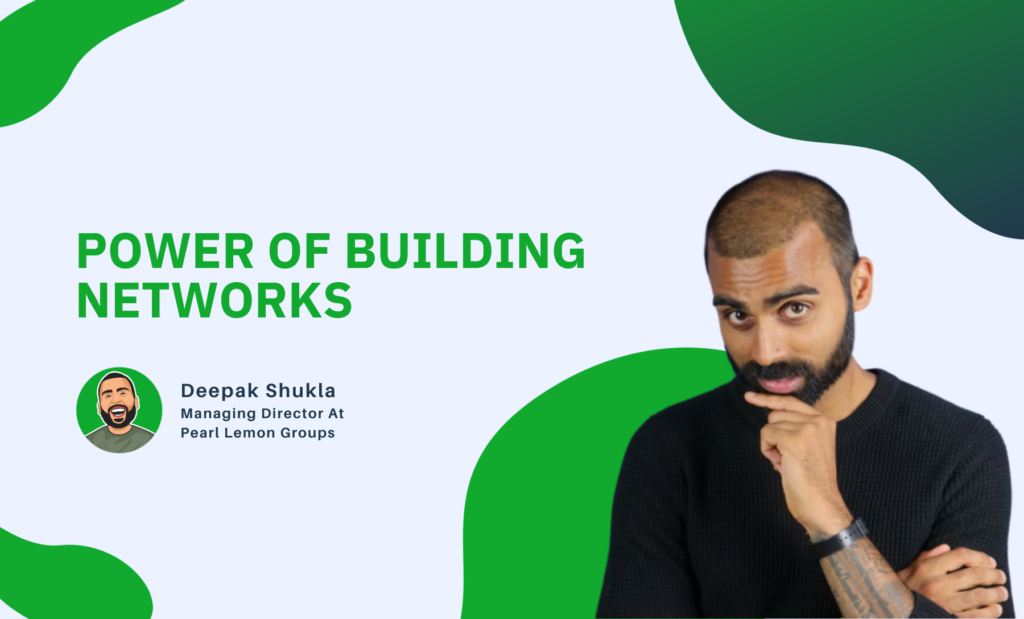Building Strong Retrieval Networks: The Power of Connecting Information 🚀
Introduction: The Accelerated Learning Advantage 🚀
Welcome to an exciting exploration of the learning process and the remarkable ability to accelerate it by connecting the dots.
I’m Deepak Shukla, an entrepreneur passionate about unlocking the secrets of efficient learning.
In this journey, we will uncover how connecting information can enhance your learning speed and depth.
Connecting the Dots: Building Strong Retrieval Networks 🧩
2.1 The Beauty of Comprehension Through Connection 💡
Imagine learning as a puzzle where each piece represents a fragment of knowledge. The more pieces you connect, the clearer the picture becomes.
This metaphor reflects the essence of building strong retrieval networks.
In “Learn Like a Pro,” it’s revealed that the more you learn, the quicker you become at acquiring new knowledge.
This phenomenon occurs because you’re forming connections between different bodies of information.
When these mental pathways are well-established, you can swiftly access and retrieve information, making the learning process more efficient.
Connecting information is like weaving a web of knowledge. You begin to see how various concepts relate to each other, creating a rich tapestry of understanding. This interconnected web not only accelerates learning but also deepens comprehension. As you expose yourself to a broader range of topics, you’ll find that you can bridge the gaps between them more easily.

2.2 Languages and the Displacement Dilemma 🗣️
Language acquisition provides a fascinating example of how learning can displace existing knowledge from the retrieval perspective.
While your mastery of a new language doesn’t erase your memory of older languages, it alters the cues you associate with specific words and phrases.
For instance, if you’re diving into Italian while having a foundation in Spanish, you might experience moments of confusion.
The cues you’ve developed for certain words are no longer unique to one language.
This doesn’t mean you’ve forgotten your Spanish; rather, it’s the retrieval cues that have become intertwined.
Daniela’s experience with her evolving language proficiency highlights this phenomenon.
As she became more dominant in English, her ability to readily summon cues for Spanish diminished.
Even though she hadn’t lost her Spanish, her retrieval process became more intertwined with English. This displacement dilemma showcases the dynamic nature of our mental networks.
The 10,000-Hour Rule Revisited: The Impact of Repetition and Space 🕰️
3.1 The Compound Effect of Continuous Learning 🔄
The 10,000-hour rule, popularised by Malcolm Gladwell, suggests that mastery in any field requires around 10,000 hours of dedicated practice.
However, there’s more to the equation. The effectiveness of those hours can be greatly enhanced by the principles of repetition and spaced learning.
Repetition, when used strategically, consolidates the connections between different pieces of knowledge.
By revisiting and reinforcing what you’ve learned, you’re strengthening the retrieval networks, allowing you to retrieve information more readily.

3.2 The Expanding Universe of Knowledge 🌌
The compound effect of continuous learning is a marvel in itself. Learning doesn’t occur in isolation—it builds upon a foundation of knowledge that grows with each new piece of information you acquire.
As you connect information and expand your mental models, your learning process becomes more efficient.
Imagine reading about diverse topics such as tech startups, psychology, history, or any subject that piques your interest.
The act of learning itself becomes a catalyst for understanding a myriad of scenarios and situations. Each new piece of information becomes a building block, enriching your comprehension and enabling you to grasp intricate concepts with ease.
Conclusion: Learning as the Catalyst for Understanding the World 🌏
In the world of accelerated learning, the power of connecting information cannot be underestimated.
The ability to build strong retrieval networks enhances both the speed and depth of your learning journey.
As you connect the dots between various bodies of knowledge, you uncover the beauty of comprehension through connection.
Languages, as a prime example, illustrate how learning can affect the cues you associate with specific words.
While you may not lose your existing knowledge, your retrieval process becomes intertwined with new language cues, presenting a unique challenge and opportunity for mental adaptability.
Revisiting the 10,000-hour rule, we discover that repetition and spaced learning are the cornerstones of effective mastery.
When applied strategically, these principles not only consolidate existing knowledge but also amplify the compound effect of continuous learning.
In a world where information is abundant and interconnected, learning becomes the catalyst for understanding the intricate web of knowledge surrounding us.
By embracing the power of building strong retrieval networks, you embark on a journey of accelerated learning and enriched comprehension, contributing to your understanding of the world.
🚀🧩💡🗣️🕰️🔄🌌🌏
Key Takeaways: Building Strong Retrieval Networks: The Power of Connecting Information 🚀
- The Accelerated Learning Advantage:
-
-
- The learning process can be accelerated by connecting different pieces of information.
- Deepak Shukla emphasises the importance of enhancing learning speed and depth by connecting information.
-
- Connecting the Dots for Enhanced Comprehension:
-
-
- Learning is likened to assembling a puzzle, where each piece represents a fragment of knowledge.
- The more connections you make between these fragments, the clearer your understanding.
- A well-established knowledge network allows for swift access and retrieval of information, optimising the learning process.
-
- Language Learning and the Displacement Dilemma:
-
-
- Learning a new language can displace existing knowledge from a retrieval perspective, but it doesn’t erase the memory of the older language.
- An example provided is that learning Italian might create confusion for someone with a foundation in Spanish due to overlapping retrieval cues.
- The shifting dominance of one language over another can intertwine retrieval processes, as illustrated by Daniela’s experience with English and Spanish.
-
- The 10,000-Hour Rule and Its Nuances:
-
-
- While Malcolm Gladwell’s 10,000-hour rule suggests mastery requires 10,000 hours of practice, the effectiveness of these hours is heightened by repetition and spaced learning.
- Strategic repetition consolidates connections between knowledge fragments, strengthening retrieval networks.
- Continuous learning is a compound effect; learning builds upon previous knowledge, making the learning process more efficient.
-
- The Broader Implication of Continuous Learning:
-
-
- The act of learning becomes a catalyst for understanding a plethora of scenarios.
- Knowledge from diverse topics interlinks, creating a broader understanding and making it easier to grasp complex concepts.
-
- Conclusion and Overall Importance:
-
- Connecting information is vital in accelerated learning, enhancing both learning speed and depth.
- Languages exemplify how learning intertwines retrieval processes, highlighting the adaptability of our mental processes.
- The 10,000-hour rule, when combined with repetition and spaced learning, becomes more effective in mastery.
- In our interconnected world, learning acts as a lens to understand the vast web of knowledge, emphasising the significance of building strong retrieval networks.
Blog Summary:
In his exploration of the accelerated learning advantage, Deepak Shukla delves into the power of connecting information to boost the speed and depth of our learning. He likens the learning process to a puzzle, emphasising that connecting knowledge fragments clears the overall picture. This connection forms strong retrieval networks, making it easier to access and understand new information, weaving an intricate web of understanding. Using the example of language acquisition, Deepak highlights how learning can sometimes displace or intertwine with prior knowledge, creating unique challenges in retrieving information. Revisiting Malcolm Gladwell’s 10,000-hour rule, the significance of repetition and spaced learning in mastery is underscored. Continuous learning is depicted as a compound effect, where each new knowledge piece builds upon the last, refining our comprehension. In the age of abundant information, Deepak champions building robust retrieval networks as the key to truly understanding the vast world around us.



